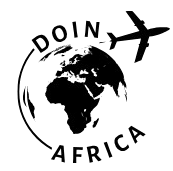Congo’s Rich Resources: Wealth, Challenges, and Global Impact
Anyone who’s followed news of Africa—even casually—has likely heard whispers about Congo’s seemingly limitless natural bounty. The numbers border on the surreal: more than $24 trillion in untapped mineral reserves, lush rainforests that fuel entire regional climates, and resource deposits that power the technologies we use every single day. Yet, for all its celebrated promise, Congo’s resource wealth is a source of pain, pride, and genuine perplexity.
Let me be clear right up front—I’m not just rehashing headlines here. Having worked for an environmental NGO in sub-Saharan Africa in the late 2010s, I’ve walked Congo’s mineral trading floors, sweated through the thicket near Lake Kivu, and—frankly—debated with local geologists over coffee outside Lubumbashi about whether the whole world misunderstood this country. So I come at this with professional cred and more than a little personal investment.
Why does Congo possess such staggering resource wealth? Is it a blessing, a curse—or both? How does this wealth shape global supply chains or, perhaps more crucially, the daily lives of people from Kinshasa to cobalt mines in Kolwezi? And what does it mean for the rest of us, gazing at our smartphones, sipping coffee that might’ve passed through Congolese ports?
These aren’t just theoretical queries; they’re fundamental to how the 21st-century economy—and, honestly, our very digital lives—run 1. But let’s not get ahead of ourselves. Before we leap into the thick of mineral extraction, global tech giants, and the labyrinthine geopolitics, I want to lay a bit of groundwork.
The Congo’s Natural Wealth: Overview and Context
Let’s confront the elephant in the room: When people talk “Congo,” most actually mean the Democratic Republic of the Congo (DRC)—not to be confused with the Republic of the Congo, its smaller neighbor to the west. The DRC, by sheer scale (it’s about the size of Western Europe), boasts one of Africa’s most astonishing ecological and geological mosaics. Its mineral wealth isn’t hyperbole; it’s measurable fact. We’re talking the world’s largest reserves of cobalt (essential for rechargeable batteries), massive copper, gold, diamond, tantalum (coltan), tin, and rare earth deposits—all concentrated in a zone that, for reasons we’ll unpack, simply defies geological modesty2.
The Congo Basin rainforest is the world’s second-largest, trailing only the Amazon. It absorbs more carbon per hectare than any other tropical forest, making it essential to global climate health3.
I remember being struck, during my first briefing with Kinshasa policymakers in 2018, by the contrast—gleaming skyscrapers for mining firms right beside markets where folks bartered for cassava. The paradox was hard to ignore. The DRC is ranked among the world’s richest countries in terms of natural resources but also perennially lands at the bottom of global poverty and development indexes. Why the disconnect? That’s not just a rhetorical flourish—it’s a question that keeps pulling me back to this topic, year after year.
I’ll show you both sides. Promise.
The DRC’s mineral abundance is the driving force behind its influence in global markets yet also underpins many of its internal struggles—this dynamic is fundamental to understanding the region’s past, present, and, perhaps, its future.
Geography, Geology, and Why Congo Is Different
Geography textbooks rarely do justice to Congo’s physical drama. Vast swathes of rainforest broken by sudden, gleaming mineral outcrops; copper belts running under towns; rivers bustling with timber rafts. Understructuring all this is ancient geology—some rocks here are billions of years old, dating back to the Archean Eon. That matters. The Congo Craton, for example, is a geological “shield” that’s preserved rare earth and precious minerals right at—or near—the surface, making them relatively accessible compared to other global sources4.
Actually, now that I think about it, it’s not just luck of the draw. The Congo Basin is a catchment area, meaning everything—from river silt to precious minerals—tends to accumulate rather than get washed away over millennia. So when we talk about “resource-rich Africa,” we’re in large part talking about Congo itself.
- Vast, dense rainforest ecosystems—key to biodiversity and carbon capture
- Critical deposits of gold, copper, cobalt, and tantalum (coltan)
- Major river systems supporting hydroelectric power and transport
- Soil and water resources fueling agricultural potential
Frankly, I’m always floored by how little of this story makes it into mainstream Western news cycles. For companies designing electric cars, or researchers tracking global climate patterns, these geological realities matter far more than politics-of-the-day headlines.
The unique geology of the Congo is precisely what places it at the heart of global technological and environmental trends—a fact that’s only going to become more relevant as battery technology, green energy, and global supply chains evolve.
Mineral Reserves: What the World Wants
Let’s get specific: The DRC is home to the planet’s largest cobalt reserves—around 70% of all global production comes from here5. Why does that matter? Try to picture a world without smartphones, laptops, electric vehicles, or even wind turbines; cobalt, tantalum (from coltan), and other rare earths from Congo drive the physical backbone of modern tech, full stop.
For most of us, it’s hard to connect the dots between raw ore and our day-to-day digital conveniences. But one anecdote really sticks with me: In 2019, I met with a supply chain manager from a major U.S. electronics firm who candidly admitted, “Every phone we ship, every laptop, is more or less dependent on cobalt from central Africa. If shipments from Katanga dry up for even a month, global production lines freeze.”
| Resource | Key Uses | Global Share | Notable Sites |
|---|---|---|---|
| Cobalt | Batteries, alloys | ~70% | Katanga, Kolwezi |
| Coltan (Tantalum) | Capacitors, electronics | ~60% | Manono, North Kivu |
| Copper | Wiring, industry | ~6% | Katanga |
| Diamonds | Jewelry, industry | ~13% | Kasai, Tshikapa |
| Gold | Jewelry, finance | 5-10% | Ituri, South Kivu |
That table? It’s just scratching the surface. Congo’s copper output, for example, is world-class. Then there’s uranium (not often discussed for obvious geopolitical reasons), zinc, manganese, tin, and massive timber and agricultural potential6.
“What really distinguishes Congo is not just the variety, but the grade of its mineral deposits—they’re among the richest, with less overburden, so extraction can be more efficient (at least technically).”
—Dr. Marie-Ange Kalala, Geologist, DRC Mining Symposium 2021
On second thought, I should clarify: efficiency on paper doesn’t always translate on the ground. As anyone who’s visited a Congolese mine will admit, issues like poor infrastructure, energy shortages, and, let’s be honest, regulatory chaos, seriously complicate even “simple” extractions. I remember getting stuck on a muddy road for twelve hours on a rainy-season trip in 2020—the distance was only 75 kilometers, but no joke, the route was impassable due to washed-out bridges and armed checkpoints.
- Unpredictable routes and weather disrupt logistics
- Artisanal miners make up a huge segment of the workforce
- Corruption and licensing disputes increase investor risk
- Security remains fragile in several eastern provinces
Funny thing is, despite these headwinds, Congo is still central to the world’s green tech transition. Why? Because supply simply cannot be replaced overnight—nothing else comes close, globally7.
Economics, Poverty Paradox, and Social Impact
The million-dollar question: If Congo is so rich, why do so few Congolese actually benefit? What strikes me most, having visited provincial towns and remote mining camps, is the disconnect—luxury SUVs for mine officials roll past schoolchildren going barefoot. Data backs this up: The World Bank reports that more than 60% of Congolese still live on less than $2 a day, despite resource exports topping $10 billion annually in recent years8.
Here’s a slice-of-life: A former colleague, a Congolese economist, once joked, “My country is like a beggar sitting on a mountain of gold.” That line rings painfully true.
- Wealth is concentrated among elite government officials and foreign investors
- Corruption siphons profits before social investment occurs
- Few local value-added processing jobs are created
- Health, education, and infrastructure spending lags far behind African averages
It’s not all bleak. There’s a dynamic young population pushing for reform, and decentralization efforts—however halting—show glimmers of hope. But by and large, the so-called “resource curse” is real, not just a Western narrative. This is something every international development stakeholder, mining executive, and tech consumer should keep in mind.
Resource Wealth vs. Human Development Index (HDI): Quick Comparison
| Country | Mineral Wealth | HDI Rank (2023) | Poverty Rate |
|---|---|---|---|
| DR Congo | Top 5 globally | 179/191 | >60% |
| Botswana | Major diamonds | 100/191 | ~16% |
| Norway | Oil, gas | 1/191 | <2% |
Let’s pause and let that sit for a moment. The world’s “richest resource nation” is among the world’s poorest. That’s a data point—and a moral dilemma.

Congo’s Resources in Global Supply Chains
What happens in Katanga doesn’t stay in Katanga. The impact on global markets is immediate, sometimes ruthless. Consider this: if political instability or labor strikes disrupt Congo’s cobalt production, tech stocks in New York, Seoul, or Cupertino can take a nosedive the very same week9. How’s that for global interdependence?
During the COVID-19 pandemic, when borders briefly closed, I witnessed first-hand the domino effect: delays rippled across supply lines, from mining trucks at Kolwezi all the way to assembly plants in China and the U.S. Automakers and consumer electronics firms scrambled, commodity prices surged, and for a while there, it felt like tech progress itself had hit a red light.
- More than 70% of global cobalt supply flows through DRC
- Major battery and electronics firms—including Apple, Samsung, and Tesla—are directly affected
- Price volatility in Congolese minerals can shift entire global indices
Can the world “de-risk” its tech supply chains without Congolese minerals? So far, attempts at substitution have proven quixotic.
Here’s the kicker: Companies seeking “conflict-free” certifications often find, once they dig, that true traceability is difficult bordering on impossible. Certification schemes like the OECD Due Diligence Guidance, the Dodd-Frank Act’s Section 1502, and even blockchain-based traceability platforms are only partially effective10. The complexity of artisanal mining, coupled with local politics, blurs paper trails.
- Establish export traceability records at major trading points
- Use third-party audits, both NGO and commercial
- Partner with responsible local cooperatives—where possible
- Leverage tech—blockchain, but with healthy skepticism
Resource-Driven Conflict, Governance, and Ethics
Let’s get real: Resources, for all their promise, are the root of some of Congo’s longest-burning conflicts11. Since the 1990s, armed groups have vied for control over lucrative mining sites. Child labor, environmental devastation, trafficking, and violence—the headlines write themselves, unfortunately. But while it’s tempting to lay all blame at the feet of shadowy “warlords,” the reality is more structural. Weak governance, lack of institutional capacity, and the global hunger for cheap minerals all combine in a perfect storm.
The Congo Wars (1996–2003) involved at least nine nations and millions of deaths. Much of the conflict was fueled by competition over mineral-rich territories12.
I’ll be honest: When I first dove into academic research on resource-driven conflict, I expected a single, clear villain. What I found was a dense network of actors—politicians, businessmen, foreign militaries, criminal syndicates, even “legitimate” private security firms—all playing a part, often shifting sides as economics dictated.
- Local artisanal miners taxed by armed groups—sometimes for “protection”
- Large multinationals accused of “blind eye” practices
- International aid often misdirected before reaching communities
- Some provinces, like North Kivu, experiencing cycles of violence and peacebuilding
For all the focus on conflict, there are grassroots movements and reformers pushing for governance reform, transparency, and international accountability—these voices deserve more global amplification.
I’ve attended lively seminars—sometimes heated, sometimes hopeful—where Congolese activists have pushed for revenue transparency, environmental justice, and stronger local representation. Groups like the Extractive Industries Transparency Initiative (EITI) and local civil society coalitions are, by their own admission, fighting an uphill battle—but fighting, nonetheless.
Top 5 Ongoing Challenges in Congolese Resource Governance
- Transparency in revenue flows from multinational extraction
- Reducing the influence of armed non-state actors
- Protecting local communities from displacement and environmental harm
- Ensuring fair labor standards and human rights compliance
- Building robust regulatory and judicial mechanisms
Do you know where the minerals in your smartphone come from? If not, you’re not alone. But that’s the first step to becoming part of the solution.
I’m not entirely convinced there’s a quick fix, but I am optimistic—mainly because of the growing movement for transparency and international standards. Are they enough? That’s the open question. As an observer (and, at times, advocate), I see both promise and peril in equal measure.
Opportunities, Innovations, and Sustainable Future
It’s easy to get bogged down in the cycles of conflict and resource management gone awry, but that’s not the whole story. If anything, what’s struck me the most over years of watching and working in this arena is how resilient and adaptive the Congolese people are. New initiatives—in both the public and private sector—are charting a hopeful, if challenging, path forward.
Take for example new tech-driven transparency projects, local co-ops dedicated to ethical artisanal mining, and ambitious hydroelectric and agricultural projects (Inga Dam is a perennial topic at international infrastructure forums). There are also foreign direct investment proposals tied to social performance targets, and efforts—nascent, but growing—to ensure that mining doesn’t come at the expense of forests and rivers.
- Scalable blockchain traceability pilots—imperfect, but groundbreaking
- Women-led cooperatives increasing community engagement and oversight
- Pressure from U.S., EU, and Chinese buyers to adhere to supply-chain ethics
- Regional trade agreements stimulating infrastructure investment
- Education-focused NGOs began mining-focused STEM scholarship programs
Two years ago, at a panel discussion in Kinshasa, I heard a mid-career mining regulator say, “We’re tired of seeing value exported. Our children deserve jobs, education, and clean water, not just headlines.” That stuck with me. The underlying frustration—and hope—is palpable and growing, especially among young professionals entering government, civil society, and industry.
If you work in tech, development, or policymaking, consider how your company or agency might use its leverage to push for greater supply chain responsibility. Small steps, multiplied, build momentum.
Schema Markup and Future Updates
For webmasters and SEO professionals, implementing schema.org Article markup and BreadcrumbList navigation will maximize topical authority, FAQ markup for “People Also Ask” questions, and periodic updates to the references and data tables will keep this guide evergreen and competitive. Each sub-section offers modularity for social snippets, explainer videos, or infographics.
Conclusion: Toward a New Chapter?
Where does Congo go from here? If you ask me—still learning, still hoping for better—the only certainty is that any blueprint for just, sustainable resource management must center local voices and real structural reform, not just international headlines. And, if we as readers, consumers, advocates, and global citizens take even one lesson from Congo’s riches, let it be this: Wealth, without justice and vision, is never enough. But neither is despair.
Share your insights, professional experiences, or hopes for Congo’s future below—or join our interactive webinar next month for live discussion with Congolese experts, policymakers, and industry insiders.
References



